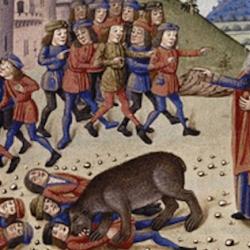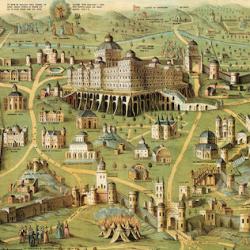A possible chiastic ouline for the stories of Elijah:
A. Elijah appears suddenly, and leaves the land, 1 Kings 17
B. Fire from heaven in a contest of gods, 1 Kings 18
C. Elijah complains to Yahweh on Horeb, and is assured that Ahab’s house will perish, 1 Kings 19
D. Ahab spares the Gentile king Ben-Hadad, 1 Kings 20
D’. Ahab kills the faithful Israelite, Naboth, 1 Kings 21
C’. Ahab killed after being warned by a lone prophet, 1 Kings 22
B’. Fire from heaven in a contest of gods, 2 Kings 1
A’. Elijah suddenly departs on the east side of the Jordan, 2 Kings 2
A few comments on the central sections: First, they are structurally similar; both tell stories that resolve neatly, only to be extended by the appearance of a prophet. Second, Ahab’s actions in the two places summarizes his apostasy: He loves Gentiles while hating faithful Israelites. He fails to carry out holy war against Ben Hadad, but prosecutes it instead against Naboth and his house. The centrality of this section is made more emphatic by the pun on the name “Naboth,” which is very similar to the Hebrew word for prophet. The central concern in Ahab’s reign and in Elijah’s ministry is the king’s response to the prophet. Elijah’s work is ultimately all about avenging the blood of the prophets (cf. 1 Kings 19, and the work of Jehu).















